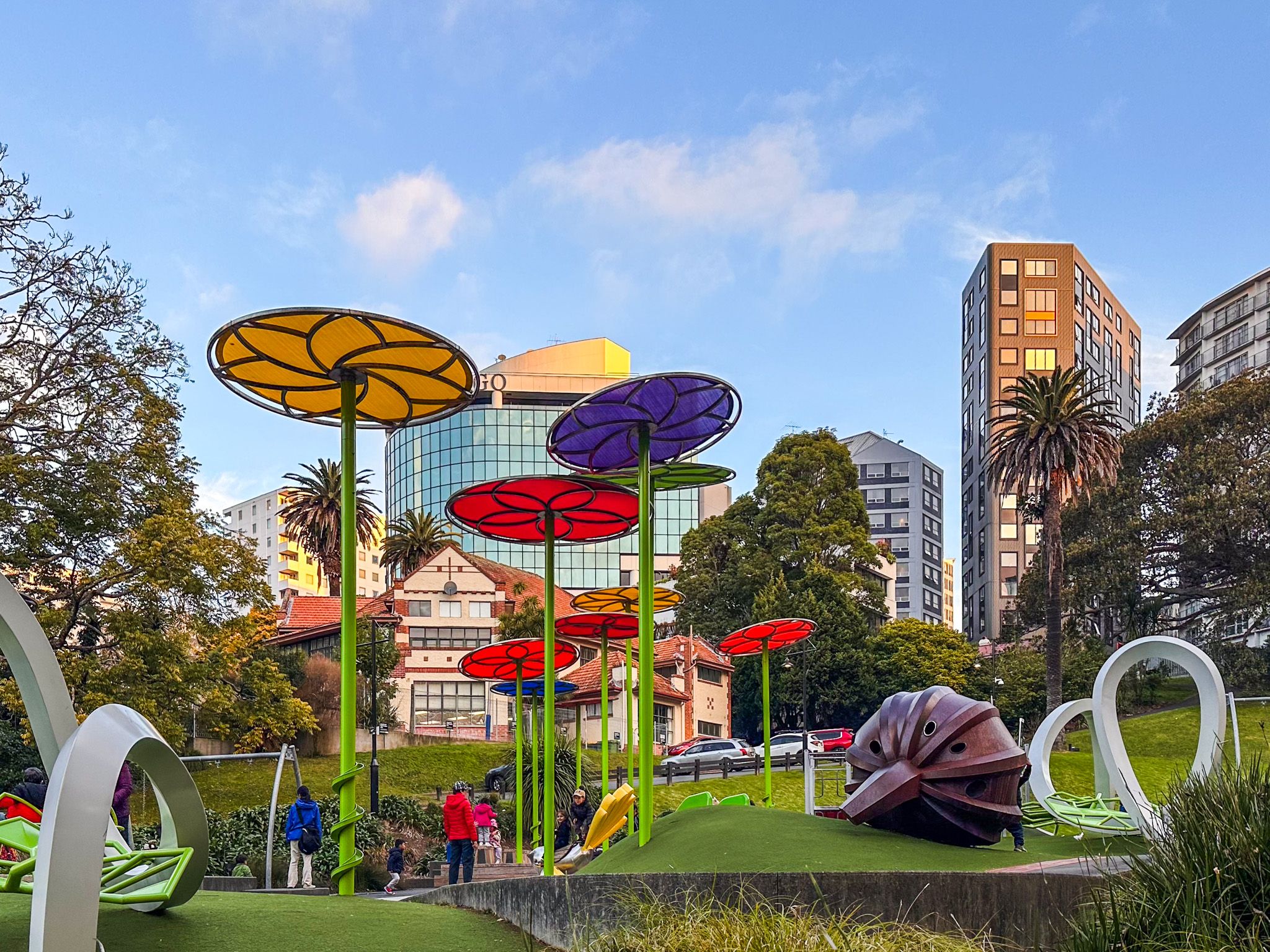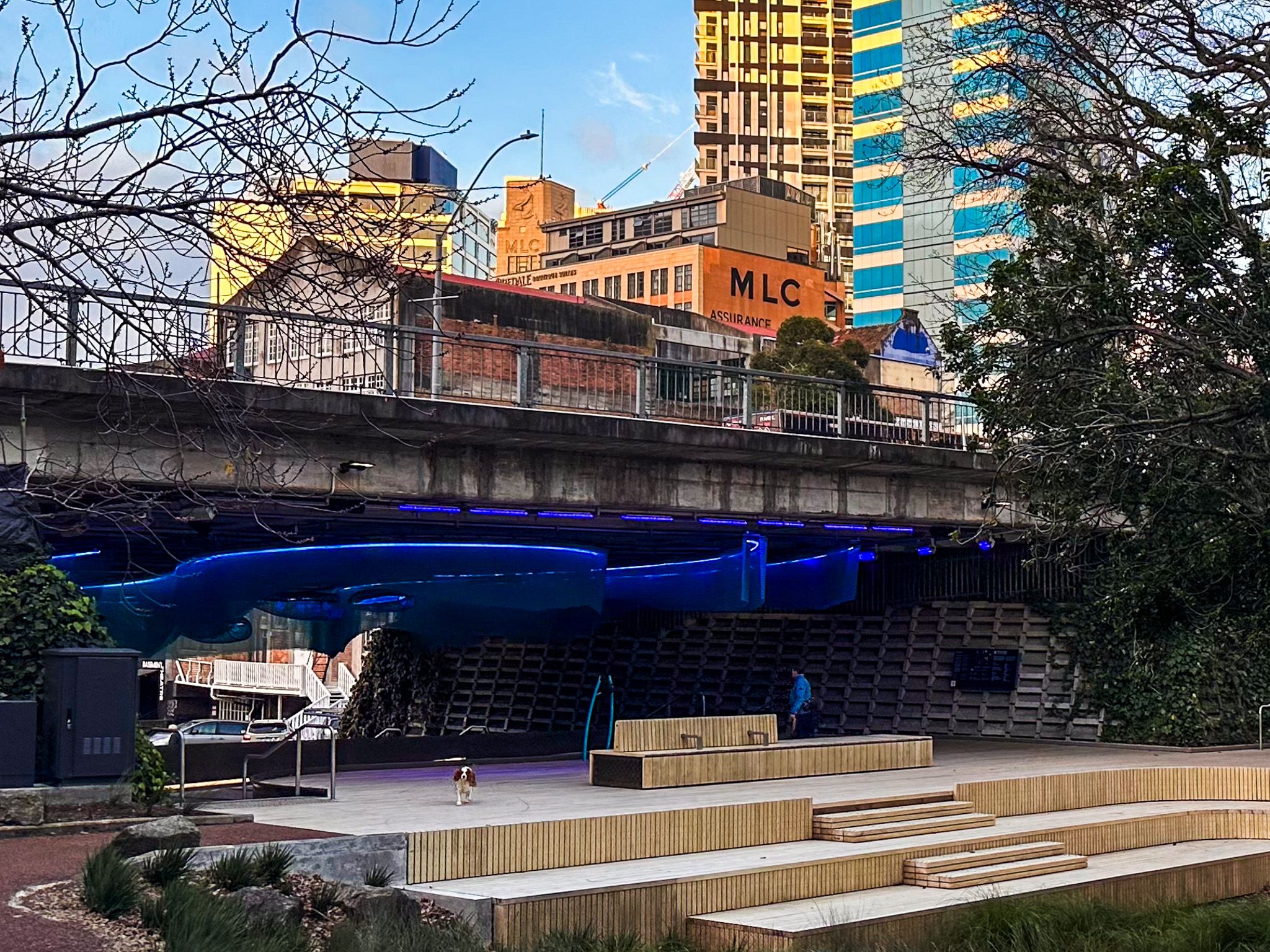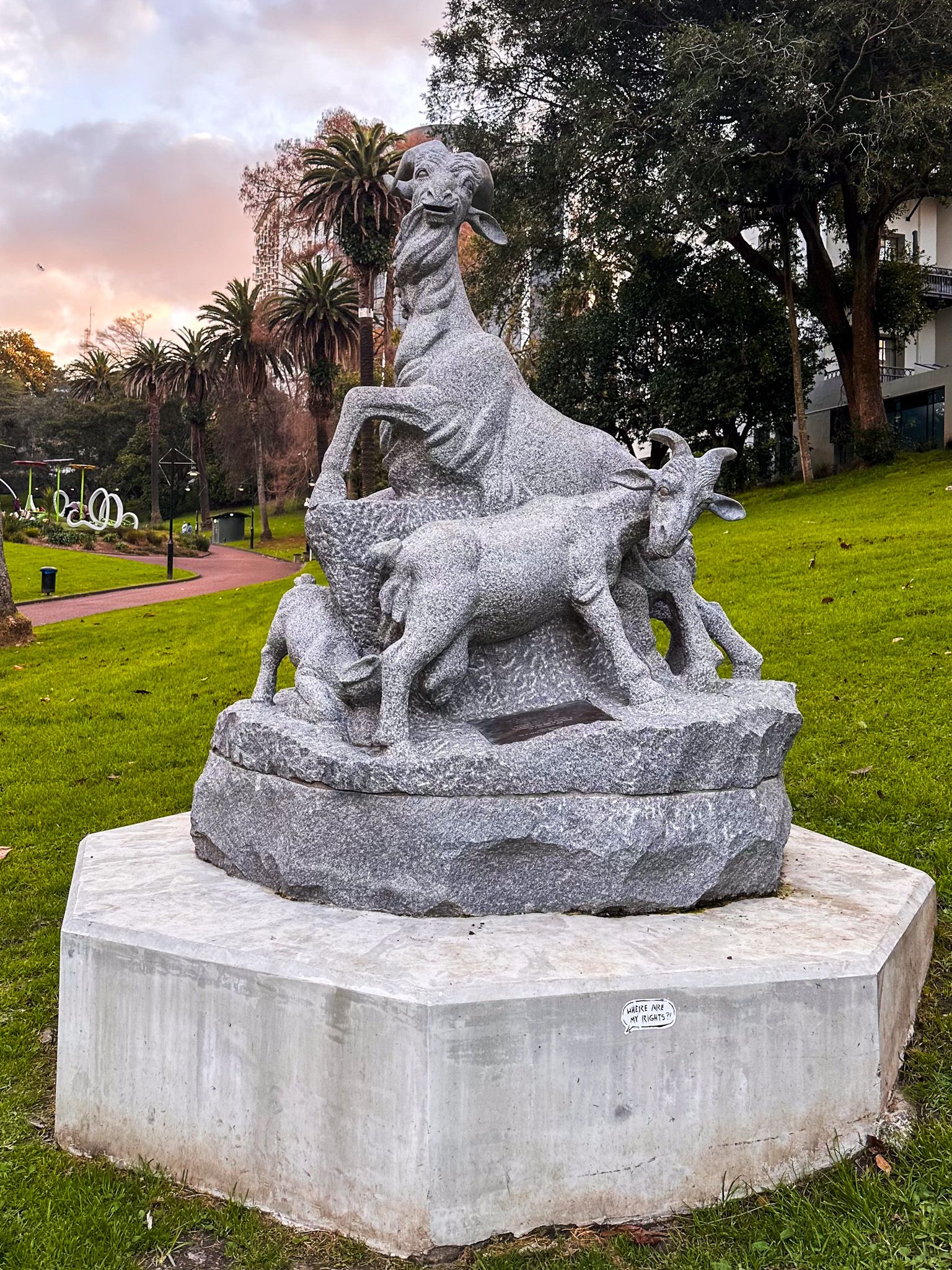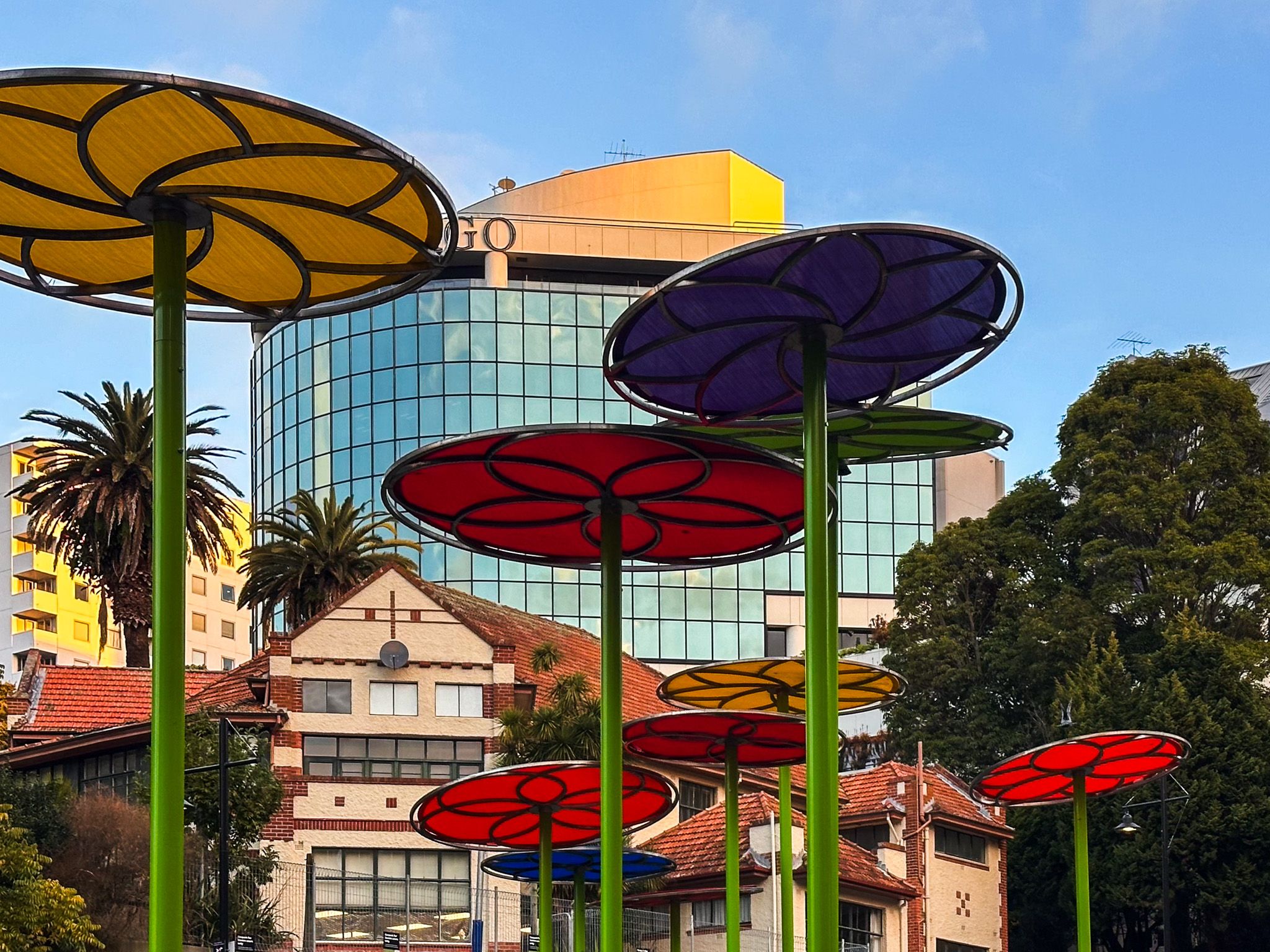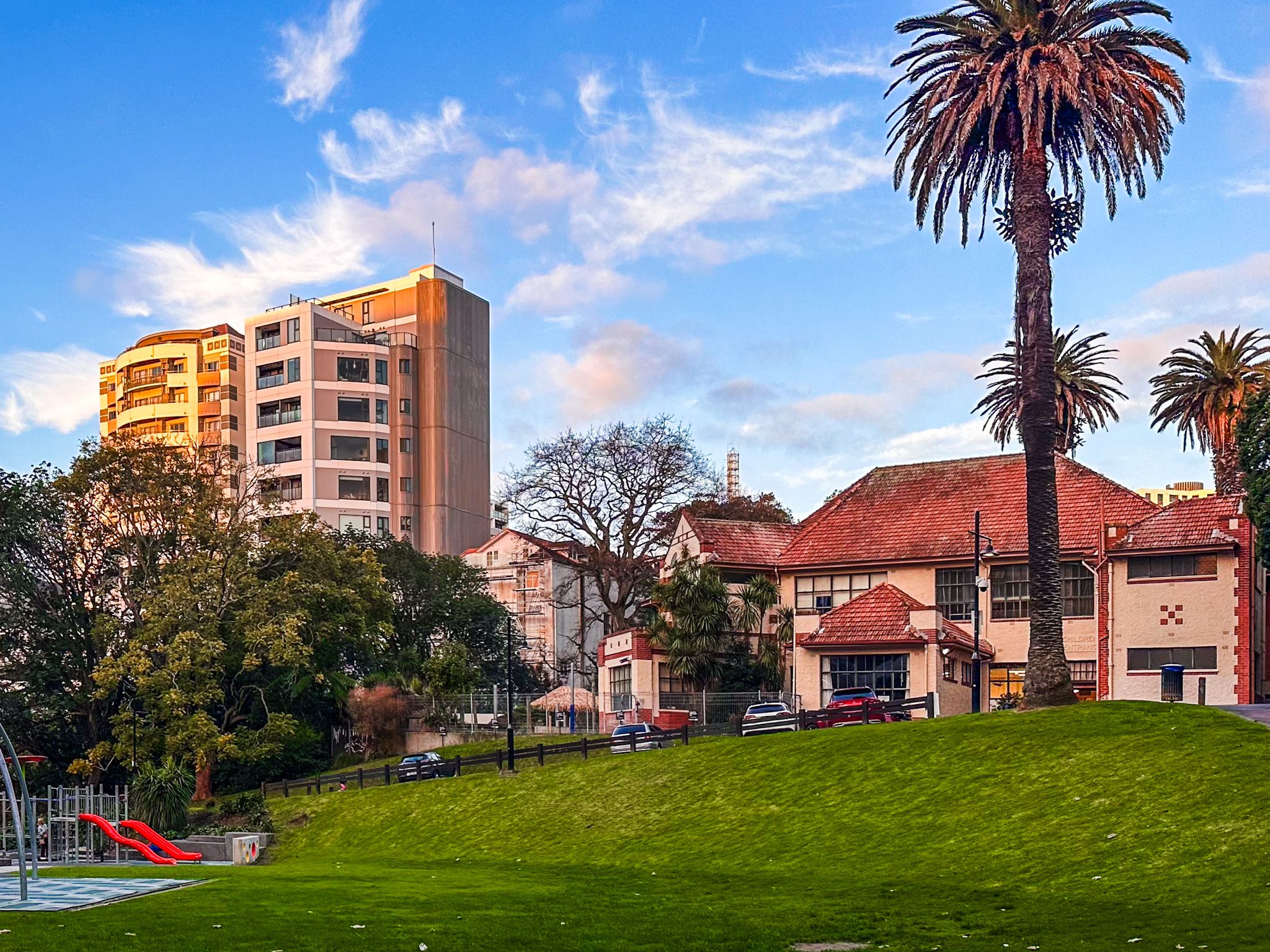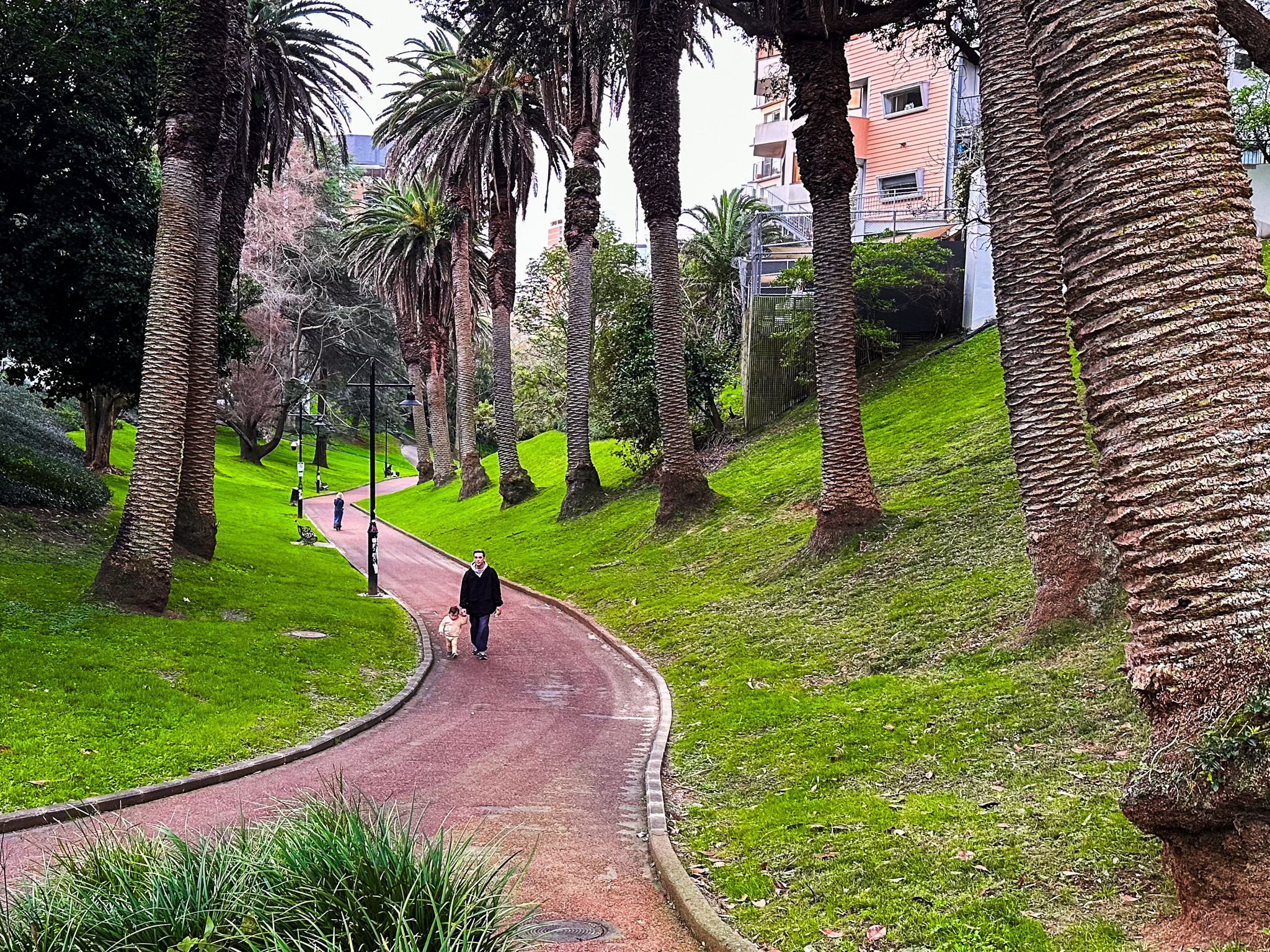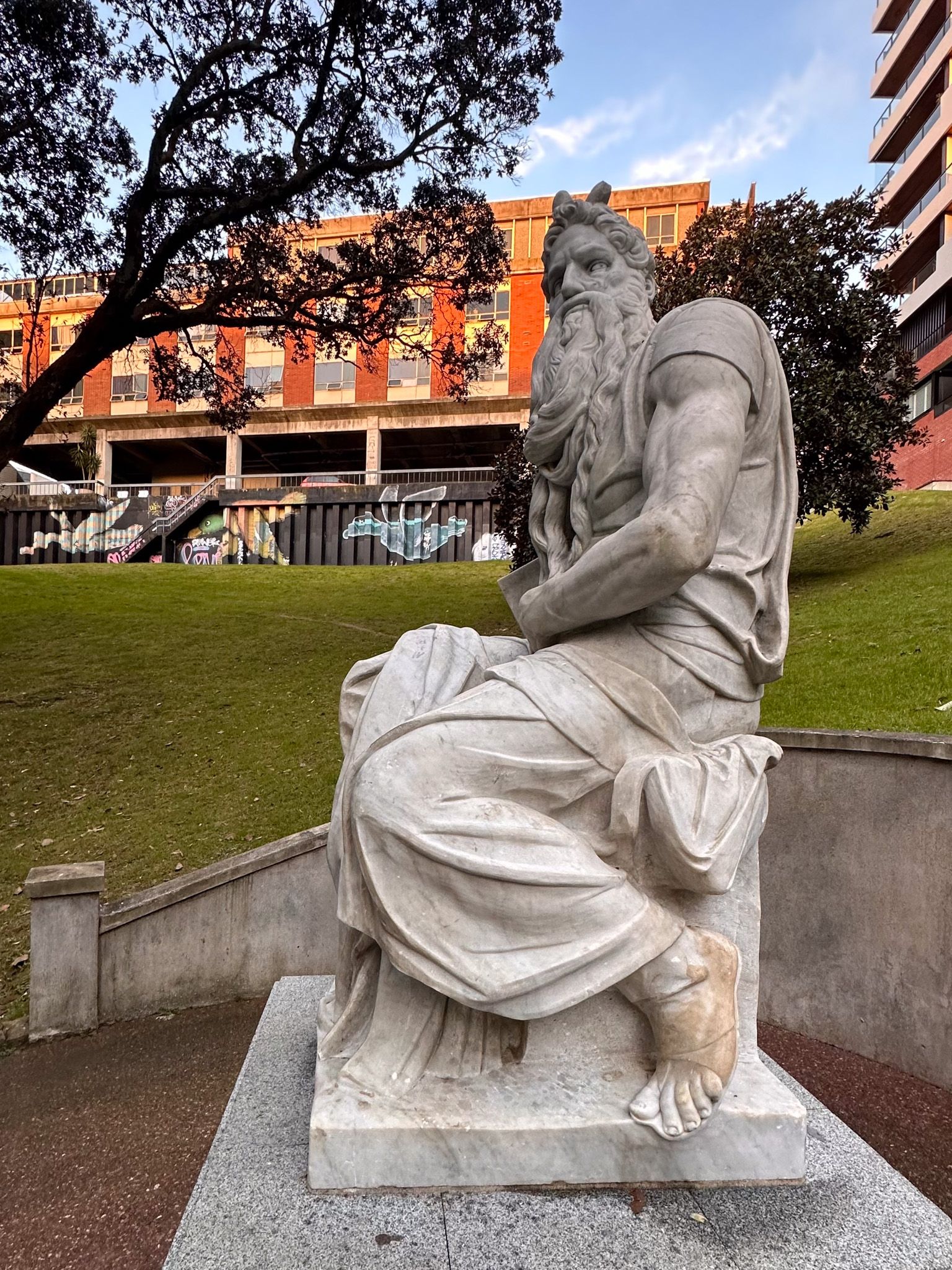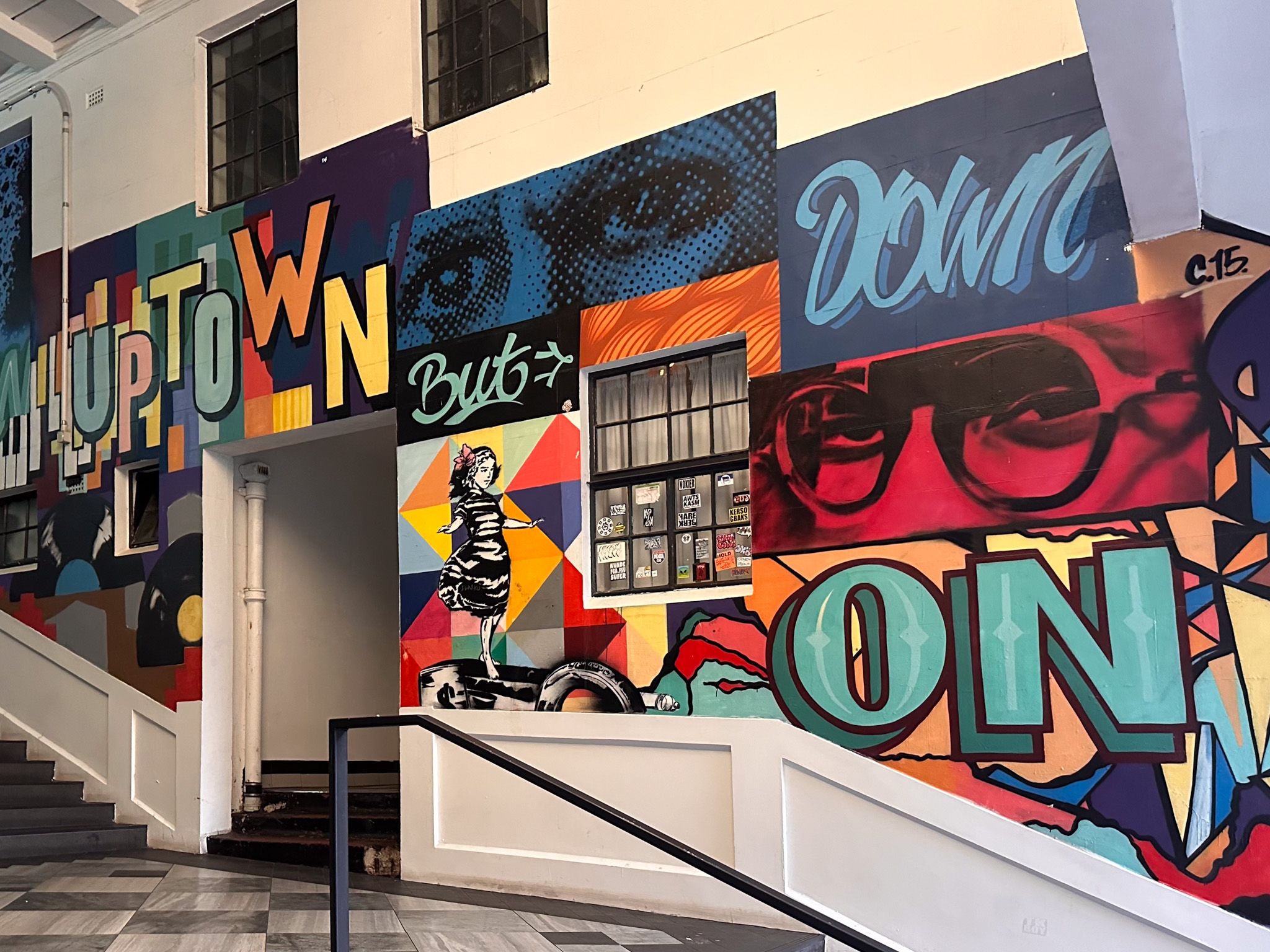Myers Park (Horotiu) is a lesser-known city gem in Downtown Auckland. It runs parallel to the southern part of Queen Street, with access from Queen Street, Mayoral Drive, St Kevins Arcade on K Road, and Greys Avenue to the west. The park follows a gully with steep, grassed slopes, surrounded mainly by modern commercial buildings and apartments on both sides. However, the enclosed effect is offset by a mix of large sheltering exotic and native trees.
The park's most immediate feature is the large and creative playground. It features a collection of large and colourful disc-shaped flowers and a large kamokamo (a kind of squash) eaten by caterpillars, giant birds, and insects. However, several other features reflect its interesting early history and the more recent addition of artwork.
The park was formed in 1914-15 from what had become a wasteland. The Waihorotiu Stream flowed through the gully and then alongside the route of Queen Street. The section alongside Queen Street was bricked over in the 1880s, but the remaining open stream became polluted. With the development of the park, this section was also moved underground.
The American City Beautiful and Reform Park movements in the late 1800s to early 1900s influenced Auckland’s mayors when the park was developed. The goal was to beautify cities and make them more accessible for families. Arthur Myers was mayor from 1905 to 1909 and ended up with the name accolade for the park. He contributed £9,000 to the City to purchase the gully. The 2.4-hectare wasteland was designed as a Reform Park for young families to engage with nature.
Myers also funded the original playground and the Kindergarten Building, a prominent park feature on the Queen Street side. This building is a notable example of Arts and Crafts architecture in Auckland, and part of it still operates as a play centre.
The park also has a kauri caretaker's cottage known as "Randalls," which probably dates back to the 1850s. It is named after a house in Jane Austen's novel Emma. It has been recently renovated and is near the southwest corner of the Kindergarten Building.
The various artworks in the park also have interesting stories. In 1971, the Milne & Choyce Department Store offered Auckland City two copies of original Michelangelo statues made from the same marble. The city declined David but installed the Statue of Moses at the base of the stairs leading to St Kevin's Arcade in 1973.
In 1999, Auckland's sister city, Guangzhou, presented the Five Goats statue found on the north side of the playground. It recalls when adjacent Greys Avenue was home to many Chinese people.
In 2011 and 2023, three bronze sculptures by Rachel Walters, "Hau te Kapaka" (The Flapping Wind), were installed at the Queen Street entrance to the park. These comment on the effects of human activity on the natural world. You can also see a shimmering aqua-blue light sculpture named Waimahara beneath the underpass at the park's northern end. It represents the stream that flows beneath the gully and down Queen Street.
